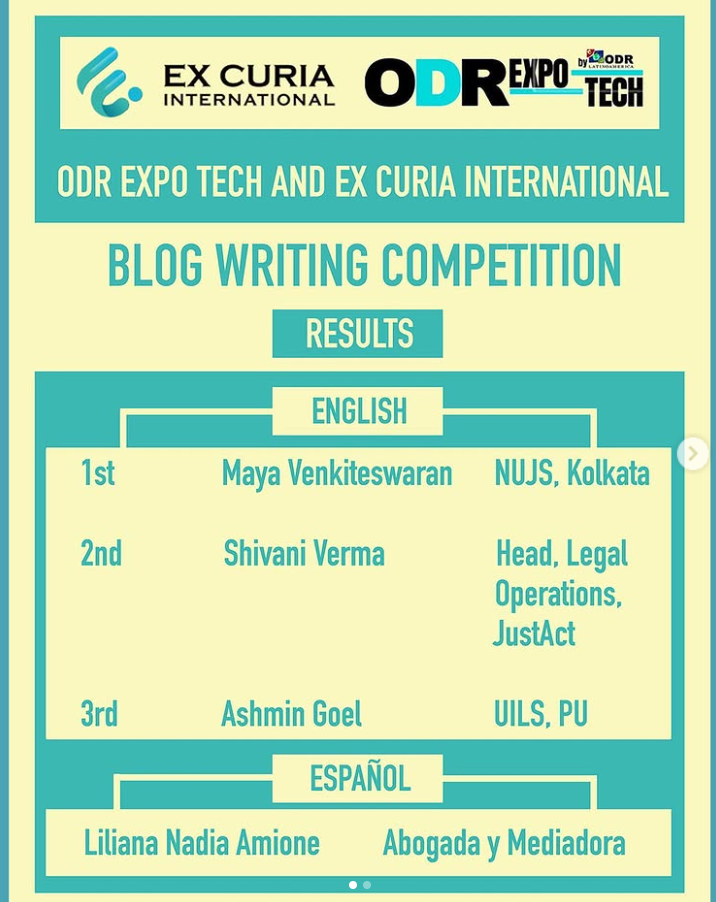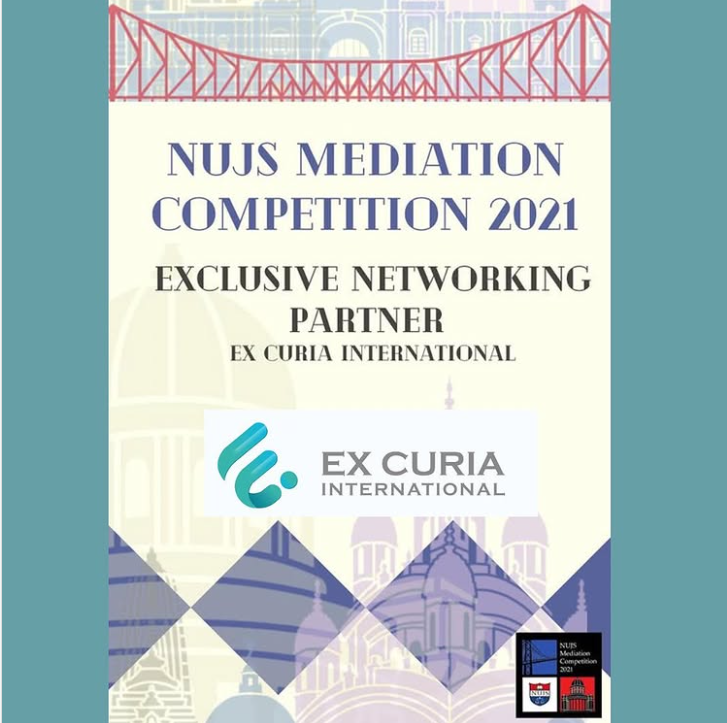ARTIFICIAL INTELLIGENCE IN MEDIATION
Maya Venkiteswaran* I. Abstract This paper aims to identify the use of Artificial Intelligence in Mediation and the benefits it may have as compared to mediation in the conventional sense. Artificial Intelligence is a developing concept and will benefit almost all fields of life. Thus, mediation is no different when we say Artificial Intelligence will bring about a more seamless process. Further, this paper will look into the various existing software developed to benefit people opting for mediation. This paper will also look into any new areas where such software may further benefit the process. Lastly, this paper will look into the impact other jurisdictions have seen after implementing Artificial Intelligence in the process of mediation. II. Introduction With the development of technology, it is hard to find any process that does not use any form of technology. The benefits one may derive from reducing human interference have been made abundantly clear over the last few decades. In recent times the development of Artificial Intelligence (hereinafter “AI”)and machine learning have taken technology a step further. We must first understand what AI is? AI refers to the teaching of human intelligence to machines programmed to perform and simulate the functions of humans. The term can be applied to any machine that learns psychological characteristics, such as learning and problem-solving. The ideal feature of AI is the ability to rationalize and take on tasks that can be very effective in achieving the goal of choice.[i] Machine learning teaches computers, through programmed algorithms, to perform human actions and allows the program to gather knowledge, from previous use, to develop their actions further. This is a process whereby a computer collects data, through repeated use, and uses it to improve and expand the functioning of its programs, to create life–like observations and functioning. Such a program does not need to be constantly developed. Instead, the machine learns by itself through a collection of data from previous interactions.[ii] The next concept we must look into is mediation. Mediation is a third-party-driven negotiation where there is a neutral third party that helps resolve a dispute. This is a non-binding process that falls under the category of alternate dispute resolution or out-of-court settlement. The benefits of mediation are that it is a confidential process that is preferred by companies and even in family disputes. This process looks into the merits of a case and the interests of each party in the dispute.[iii] In this paper I shall first analyse the relation between AI and Mediation. Subsequently, I will look into some AI programs that already exist in the field of mediation and how they function. Further, I shall look into some other areas where AI may be used to further simplify the process of mediation. Lastly, I shall delve into the benefits and problems that AI may have, while being used for the process of mediation III. The interrelation between Artificial Intelligence and Mediation AI is still a developing concept, and thus there is not much practical use of it yet in the process of mediation. Mediation has many components where AI will reduce the human element. The main aim of mediation is dispute settlement, and through AI, this can be made easier and quicker. Initially, online mediation included only communication through emails and a platform for video – conferencing. This was more or less the same as in-person mediation and did not involve any significant change to the functions of the mediator or to the duties of either party. But over time, this has changed. There have been developments where software has begun taking over certain functions of the mediator. Some software has been developed to help the parties identify the strengths and weaknesses of their case and understand a possible solution. IV. Existing programs in mediation There have been many noteworthy programs in mediation. They have helped settle disputes in many ways and simplified the process. Some are: i. SmartSettle SmartSettle is an advanced system that can support many parties that have goals that differ from each other or are in conflict. It can resolve high-level disputes that parties may have. SmartSettle acts as a qualified mediator for parties that may not be familiar with the process. It uses mathematical formulae to improve the dispute\’s outcome by taking into consideration the various priorities a party may have.[iv] Each Party must enter the various considerations it has. This is not disclosed to the other party and thus keeps the same level of confidentiality as the traditional mediation process has. The considerations may be either position, which is the stand a party takes on a particular issue, or the interests each party may have, which is the reasoning behind holding such a position. The process also requires parties to enter the optimal outcome for them. The parties must again enter their acceptable range for agreement on each issue known as the Zone of Possible Agreement.[v] SmartSettle has many ways at which an agreement may be arrived. The traditional method, where offers are exchanged and counter–offers are made to reach a solution. They may also have the software, consider all the parties\’ entries and come up with the optimal solution. The program also caters to a situation where the parties may reach a roadblock. The program may be asked to resolve it, and it will put forth a proposal it thinks would be beneficial to both parties. Lastly, the software in the final stage of the mediation may also make suggestions that bring about a further optimized solution which the parties may not have considered. If the parties are satisfied with the same, they may end the process and consider the settlement a success.[vi] ii. Family Winner In Family Winner, the program uses both game theory and heuristics. This program presents essential values to show the amount to which each party wishes to be awarded the issue being considered. The program takes information from the parties and uses it to make trade-off rules, which are then used
ARTIFICIAL INTELLIGENCE IN MEDIATION Read More »








